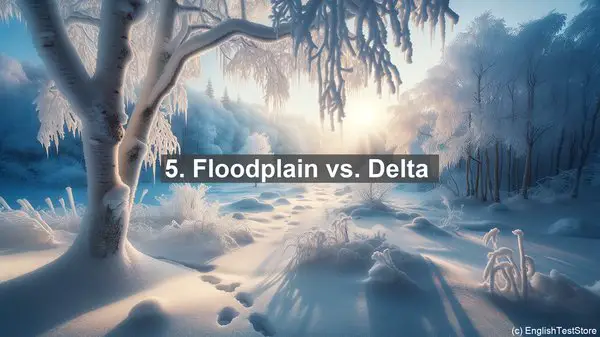Introduction: The Language of Fluvial Geomorphology
Welcome to this fluvial geomorphology lesson. Today, we’ll be diving into the world of words that often trip up students in this field. So, let’s get started!
1. Erosion vs. Deposition
Erosion and deposition are two sides of the same coin. While erosion refers to the removal of sediment or soil from one place to another, deposition is the exact opposite, where sediment is laid down. Think of erosion as nature’s ‘mover’ and deposition as its ‘setter.’

2. Meander vs. Oxbow
Meander and oxbow are terms often used to describe bends in a river. A meander is a gentle curve, while an oxbow is a U-shaped bend that forms when a meander gets cut off from the main river. So, if you’re picturing a river’s journey, think of meanders as the ‘twists’ and oxbows as the ‘loops.’
3. Alluvium vs. Bedrock
Alluvium and bedrock are two different types of materials found in river systems. Alluvium refers to the loose, sedimentary material like sand and silt that rivers transport and deposit. On the other hand, bedrock is the solid, unweathered rock beneath. In simple terms, alluvium is the ‘soft’ stuff, while bedrock is the ‘hard’ stuff.
4. Braided vs. Meandering
Braided and meandering are two types of river patterns. A braided river consists of multiple interconnected channels, giving it a ‘braided’ appearance. In contrast, a meandering river has a single, sinuous channel. So, if you’re imagining a river’s design, think of braided as ‘multiple’ and meandering as ‘curvy.’
5. Floodplain vs. Delta
Floodplain and delta are both landforms associated with rivers. A floodplain is the flat, wide area adjacent to a river that gets flooded during high water levels. On the other hand, a delta is a landform that forms at a river’s mouth, usually shaped like a triangle. So, if you’re visualizing river-related landforms, think of floodplains as ‘wide’ and deltas as ‘triangular.’

6. Velocity vs. Discharge
Velocity and discharge are two important aspects of river flow. Velocity refers to the speed at which water moves in a river, while discharge is the volume of water passing through a given point. In simpler terms, velocity is the ‘speed’ and discharge is the ‘amount.’
7. Suspension vs. Bedload
When it comes to sediment transport, there are two main types: suspension and bedload. Suspension refers to fine sediment particles that are carried within the water column, giving it a cloudy appearance. Bedload, on the other hand, consists of larger sediment particles that roll, slide, or bounce along the riverbed. So, if you’re thinking of sediment movement, imagine suspension as ‘floating’ and bedload as ‘rolling.’
8. Avulsion vs. Erosion
Avulsion and erosion are both processes that shape river systems. Erosion, as we discussed earlier, is the removal of sediment. Avulsion, on the other hand, is the sudden shift or diversion of a river’s course. So, if you’re thinking of river changes, think of erosion as ‘gradual’ and avulsion as ‘sudden.’
9. Tributary vs. Distributary
Tributary and distributary are terms used to describe river branches. A tributary is a smaller river or stream that flows into a larger one. In contrast, a distributary is a branch that splits off from the main river. So, if you’re picturing river branches, think of tributaries as ‘joining’ and distributaries as ‘splitting.’
10. Channel vs. Floodplain
The channel and floodplain are two distinct parts of a river system. The channel is the main, confined pathway through which the river flows. The floodplain, as we discussed earlier, is the wider, flat area adjacent to the channel. So, if you’re visualizing a river’s structure, think of the channel as the ‘path’ and the floodplain as the ‘surroundings.’
